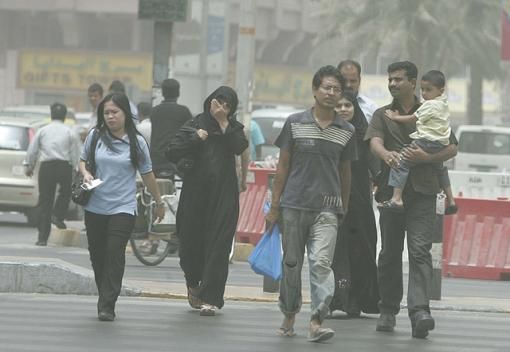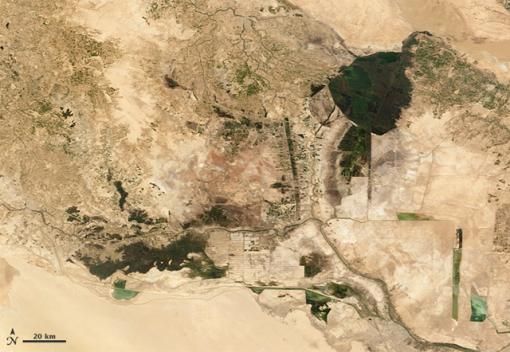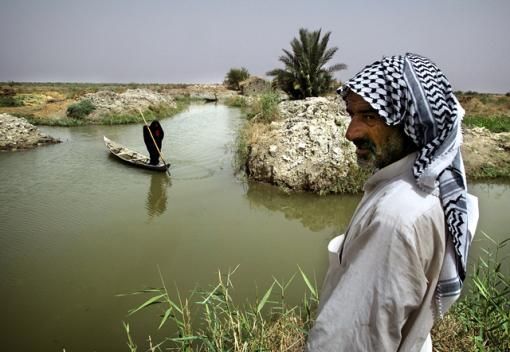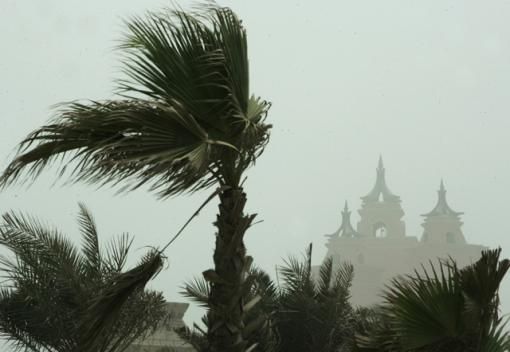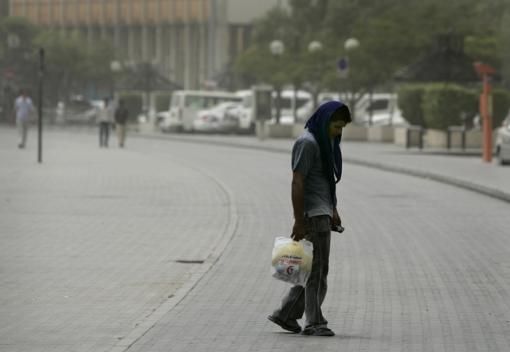Dubai: The layer of dust blanketing the Arabian Peninsula and the UAE, originating from Iraq, could be more specifically coming from the country's drying marshes once fringed by a fifth of the world's palm trees and consequently drained by then president Saddam Hussain, a scientist has said.
Iraqi professor of physics, Dr Mohammad Akef Jamal believes the dried up marshes of southern Iraq is one of many man-made disasters that hit Iraq, which was once the region's most fertile area.
In pictures: Southern Iraq's marshlands
The delta between the Euphrates and Tigers Rivers, that contained the ancient city of Babylon, is known as a fertile and dusty area. The confluence of the two rivers forms the Shatt Al Arab waterway that flows into the Arabian Gulf.
The Shatt Al Arab marshes were drained by the Saddam regime in the 1990s to prevent the militias from taking refuge there. Some scientists believe that dust from the dry areas there hang in the air in the Arabian peninsula.
A senior meteorologist at Dubai Met Department told Gulf News that satellite images show that the dust was lifted up from the Euphrates River area in Iraq. The area he was pointing to has marshlands but they are surrounded by desert dunes.
Experts believe that a storm kicked up the dust from Iraq and some specific conditions and wind movement sent a large amount of fine particles to the Gulf.
Since the turn of the 21st century, the frequency and duration of such storms have increased according to Dr Jamal.
Beginning in mid-April 2009, and continuing throughout May and June, dust storms have been plaguing Iraq and the Gulf region, which are facing the worst of such storms in living memory. "Iraq is being transformed from a fertile country into a dust bowl," said Dr Jamal.
"Man-made disasters, including Turkey's building of dams, the US occupation of Iraq and political corruption, are among others reasons that would drive Iraq to the verge of an ecological collapse."
He attributed the collapse of the local and regional ecosystems to the American invasion that led to the near total destruction of infrastructure, drought, water shortages, desertification, sandstorms, and mismanagement of resources.
According to the Iraqi Ministry of Agriculture, about 90 per cent of Iraq's land has either turned into desert or is experiencing severe desertification. Elaborating on this, Dr Jamal said this is a natural result of the continuous construction of dams by Turkey on the Tigris and Euphrates. In 1990, Turkey revealed plans to build 22 dams, which are expected to be completed in 2010.
Iraq's hydrological misery is compounded by Iran, which is also building new dams on tributaries of the Tigris, Dr Jamal said, adding that, "Some of these rivers have run completely dry."
Mohammad Raouf, Programme Manager - Environment Research at the Gulf Research Centre said the sandstorms are a natural phenomenon due to the geography of the region. "Climate change for sure is worsening the situation. Most of the dust storms in the region come from Iraq. There is no doubt that loss of arable land and water shortage in Iraq led to more desertification which have its final effect on sandstorms. In all cases, we need a long time period in order to be sure to link climate change to frequency and duration of such storms," he said.
Professor A.M.O. Mohammad, an expert in water resources and Director of Research Affairs at UAE University said the sandstorms are made up of a fine dust mostly generated by strong winds in the desert and sand dunes.
Winds normally cannot kick up dust from a dried up river bed or marshlands, he said. The presence of clay in riverbeds or marshlands turns the area into solid pieces when dry that cannot be lifted by winds.
- With inputs from Emmanuelle Landais, Staff Reporter


